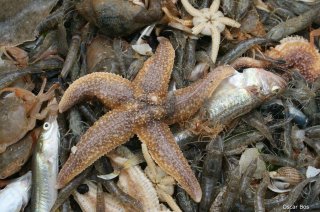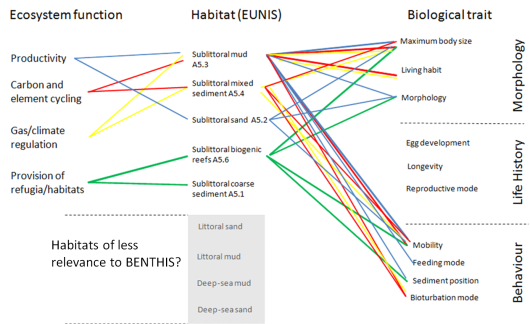
Role of benthic invertebrates in the ecosystem functioning revealed
Ever watched one of these talent shows on television where the jury judges the performers only on their voice, and not on their appearance? It is the same story for benthic invertebrates in relation to ecosystem functioning: it’s more important what they do than what they look like.
The question is: how can we relate the occurrence of species to ecosystem functioning? Bottom fishing (trawling) will impact the structure and functioning of the benthic ecosystem by changing the benthic biomass and the species composition of the benthic fauna. The large number of species present, which all differ in their vulnerability to trawling and differ in their role in the ecosystem, makes it difficult to predict how trawling will impact the functioning of a benthic ecosystem.
In BENTHIS we use a Biological Traits Analysis (BTA) as an approach to address this issue. This is an ecological approach that looks beyond the species diversity or the types of species present by focusing on the form and function of the species. That is, what matters is ‘what they do’ rather than ‘who they are’, just like in ‘The Voice’. Essentially, the analysis uses a number of life history, morphological and behavioural characteristics of species present in assemblages to indicate aspects of their ecological functioning. The BTA approach is generic and can be applied irrespective of the region, this makes it more appropriate for examining patterns in function at over larger geographical regions.
In 2013, BENTHIS made a first inventory of the relation between traits, habitats and ecosystem functioning (see figure below). Over the next two years, the project team will analyse the relative occurrence of the traits in different benthic habitats across Europe and relate them to accompanying metrics of functioning, and to varying intensities of trawling pressure. Ultimately, this analysis should give us a better insight into the impact of demersal fishing on different benthic ecosystems.

